Papers by Vladimir Kossobokov
Prevedere un terremoto significa indicare simultaneamente le principali caratteristiche (tempo, s... more Prevedere un terremoto significa indicare simultaneamente le principali caratteristiche (tempo, spazio e minima magnitudo attesa) di un terremoto imminente, generalmente sulla base dell\u2019osservazione di uno o pi\uf9 segnali precursori. La precisione con la quale si pu\uf2 prevedere la localizzazione spazio-temporale di un forte evento \ue8 tuttora un problema aperto. La previsione pu\uf2 essere probabilistica, ossia la magnitudo, il tempo e la localizzazione dell\u2019evento possono essere indicati in modo non esatto, con una percentuale intrinseca di falsi allarmi e di fallimenti di previsione. Tuttavia la capacit\ue0 predittiva deve essere superiore a quella ottenibile dichiarando gli allarmi in modo casuale
AGU Fall Meeting Abstracts, Dec 19, 2014
Earthquake forecast/prediction is an uncertain profession. The famous Gutenberg-Richter relations... more Earthquake forecast/prediction is an uncertain profession. The famous Gutenberg-Richter relationship suggests limiting magnitude range of prediction to about one unit. Otherwise, the statistics of outcomes would be essentially related to dominating smallest earthquakes and may be misleading when attributed to the largest earthquakes of the targeted magnitude range. This is usually ignored. Moreover, the intrinsic uncertainty of earthquake sizing allows selfdeceptive picking additional cases of justification "just from below" the magnitude range of target earthquakes. Of course, these might be important encouraging evidence but, by no means, can be a "helpful" additive to statistics of a rigid testing.
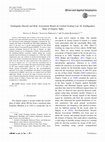
EGUGA, Apr 1, 2016
The Gujarat state of India is one of the most seismically active intercontinental regions of the ... more The Gujarat state of India is one of the most seismically active intercontinental regions of the world. Historically, it has experienced many damaging earthquakes including the devastating 1819 Rann of Kachchh and 2001 Bhuj earthquakes. The effect of the later one is grossly underestimated by the Global Seismic Hazard Assessment Program (GSHAP). To assess a more adequate earthquake hazard for the state of Gujarat, we apply Unified Scaling Law for Earthquakes (USLE), which generalizes the Gutenberg-Richter recurrence relation taking into account naturally fractal distribution of earthquake loci. USLE has evident implications since any estimate of seismic hazard depends on the size of the territory considered and, therefore, may differ dramatically from the actual one when scaled down to the proportion of the area of interest (e.g. of a city) from the enveloping area of investigation. We cross-compare the seismic hazard maps compiled for the same standard regular grid 0.2°9 0.2°(1) in terms of design ground acceleration based on the neo-deterministic approach, (2) in terms of probabilistic exceedance of peak ground acceleration by GSHAP, and (3) the one resulted from the USLE application. Finally, we present the maps of seismic risks for the state of Gujarat integrating the obtained seismic hazard, population density based on India's Census 2011 data, and a few model assumptions of vulnerability.
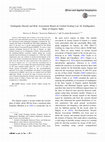
AGUFM, Dec 1, 2017
The Gujarat state of India is one of the most seismically active intercontinental regions of the ... more The Gujarat state of India is one of the most seismically active intercontinental regions of the world. Historically, it has experienced many damaging earthquakes including the devastating 1819 Rann of Kachchh and 2001 Bhuj earthquakes. The effect of the later one is grossly underestimated by the Global Seismic Hazard Assessment Program (GSHAP). To assess a more adequate earthquake hazard for the state of Gujarat, we apply Unified Scaling Law for Earthquakes (USLE), which generalizes the Gutenberg-Richter recurrence relation taking into account naturally fractal distribution of earthquake loci. USLE has evident implications since any estimate of seismic hazard depends on the size of the territory considered and, therefore, may differ dramatically from the actual one when scaled down to the proportion of the area of interest (e.g. of a city) from the enveloping area of investigation. We cross-compare the seismic hazard maps compiled for the same standard regular grid 0.2°9 0.2°(1) in terms of design ground acceleration based on the neo-deterministic approach, (2) in terms of probabilistic exceedance of peak ground acceleration by GSHAP, and (3) the one resulted from the USLE application. Finally, we present the maps of seismic risks for the state of Gujarat integrating the obtained seismic hazard, population density based on India's Census 2011 data, and a few model assumptions of vulnerability.

Seismological Research Letters, Jan 29, 2020
Existing evidence on the origin times of magnitude M≥7.5 earthquakes worldwide, based on authorit... more Existing evidence on the origin times of magnitude M≥7.5 earthquakes worldwide, based on authoritative earthquake catalogs, does not permit rejection of the null hypotheses of random coincidental occurrence at any time during the Earth or the Moon cycles. Specifically, the nonparametric Kuiper test statistics for cyclic variations applied to seismic evidence resulting from the empirical distributions of the M≥7.5 earthquake origin time Julian day (JD) and the Moon phase (MP) do not allow the rejection of the null hypotheses of uniform distributions within the corresponding cycles. On the other hand, the same Kuiper test permits the rejection of the null hypotheses of the same chance of occurrence on any JD or MP for strong magnitude M≥6.0 earthquakes, at least for the past four decades of presumably the best-earthquake determinations and, in particular, for earthquakes in the Northern Hemisphere (with an evident seasonal pattern). The nonparametric two-sample Kolmogorov–Smirnov test statistics suggest no preferred distances to the Moon at the occurrence of large earthquakes. All of this contributes, to the results of solid statistical testing of hypotheses, for a better understanding of the complex seismic response of the Earth’s lithosphere to periodic gravitational loading.
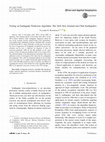
Pure and Applied Geophysics, Apr 8, 2017
SW of Puerto Quellon, Chile earthquakes happened outside the area of the ongoing real-time global... more SW of Puerto Quellon, Chile earthquakes happened outside the area of the ongoing real-time global testing of the intermediateterm middle-range earthquake prediction algorithm M8, accepted in 1992 for the M7.5? range. Naturally, over the past two decades, the level of registration of earthquakes worldwide has grown significantly and by now is sufficient for diagnosis of times of increased probability (TIPs) by the M8 algorithm on the entire territory of New Zealand and Southern Chile as far as below 40°S. The mid-2016 update of the M8 predictions determines TIPs in the additional circles of investigation (CIs) where the two earthquakes have happened. Thus, after 50 semiannual updates in the real-time prediction mode, we (1) confirm statistically approved high confidence of the M8-MSc predictions and (2) conclude a possibility of expanding the territory of the Global Test of the algorithms M8 and MSc in an apparently necessary revision of the 1992 settings.
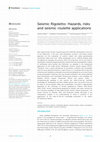
Frontiers in Earth Science
Neo-Deterministic Seismic Hazard Assessment (NDSHA), dating back to the turn of the Millennium, i... more Neo-Deterministic Seismic Hazard Assessment (NDSHA), dating back to the turn of the Millennium, is the new multi-disciplinary scenario- and physics-based approach for the evaluation of seismic hazard and safety–guaranteeing “prevention rather than cure.” When earthquakes occur, shaking certainly does not depend on sporadic occurrences within the study area, nor on anti-seismic (earthquake-resistant) design parameters scaled otherwise to probabilistic models of earthquake return-period and likelihood — as adopted in the widespread application of the model-driven Probabilistic Seismic Hazard Analysis (PSHA). Therefore, from a policy perspective of prevention, coherent and compatible with the most advanced theories in Earth Science, it is essential that at least the infrastructure installations and public structures are designed so as to resist future strong earthquakes. Evidences and case histories detailed in the newly published book Earthquakes and Sustainable Infrastructure present...
Journal of the Geological Society of India, Dec 7, 2022

Seismic hazard assessment (SHA) and associated risks (SRs) require necessarily an adequate unders... more Seismic hazard assessment (SHA) and associated risks (SRs) require necessarily an adequate understanding of earthquake distribution in magnitude, space, and time at regional scale. The Neo-Deterministic Seismic Hazard Assessment (NDSHA) is the innovative multi-disciplinary scenario-physics-based approach for reliable evaluation of seismic hazard and risks, which have been developed to overcome evident shortcomings of the outdated and very often wrong Probabilistic Seismic Hazard Analysis (PSHA). The NDSHA applications in many countries worldwide (Panza et al., 2021) pass intensive testing by instrumental and historical evidence, as well as by realistic modelling of scenario earthquakes. NDSHA results confirm reliable and effective input for mitigating object-oriented SRs. We applied two agents of the NDSHA synergy, i.e. Unified Scaling Law for Earthquakes (USLE) and anisotropic propagation of seismic effect, to evaluate SRs for the railway infrastructure in the Lake Baikal region.US...
Pure and Applied Geophysics
AGU Fall Meeting Abstracts, Dec 1, 2016
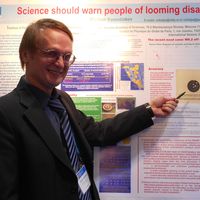
Uploads
Papers by Vladimir Kossobokov